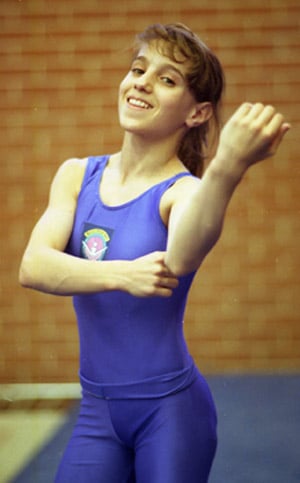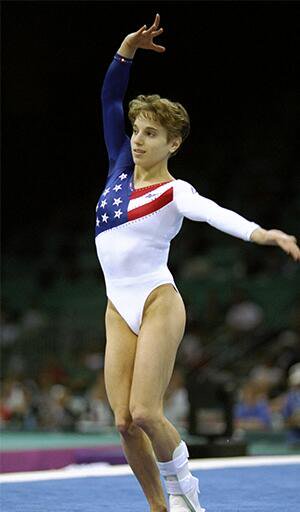
Her first was scored 9.137, her second 9.2. with a high score of 9.662, followed with Chow (9.712), Miller (9.7) and Dawes (9.762).Īll was going smoothly until the youngest American, tiny Moceanu, fell on both of her vaults. In women’s gymnastics, competitors are allowed two vault attempts, with the lower score discarded. They entered their last event of the night, the vault, ahead of the Russians by 0.897, a lead they tried to protect with conservative, safe but solid routines. In their first three events of the team finals-uneven bars, beam and floor exercise-the Americans did not produce an individual score lower than 9.6 out of a possible 10.0, exceptionally strong numbers. qualifiers were Shannon Miller and Dominique Dawes in all-around, Dawes on the vault, Dawes and Amy Chow on the uneven bars, Miller and Moceanu on the balance beam and Moceanu on floor exercise. Strug qualified for the all-around, vault and floor exercise finals, but Carr gave her only a “50-50” chance of being physically sound enough to compete. Then, next Monday and Tuesday, the top eight ranking gymnasts on vault, uneven bars, balance beam and floor exercise compete in the individual apparatus finals. The top-ranked 36 gymnasts in the team competition qualify for the individual all-around finals, to be held Thursday at the Georgia Dome. I’ve waited and trained for four years to compete in the all-arounds, and now that might be taken away from me.” “At the same time, I’m a little bit upset with my physical aspect. “I have a lot of mixed emotions tonight,” Strug said. She entered the room on crutches, with her foot encased in a special boot that circulated cold water around the ankle, intended to reduce swelling. After undergoing X-rays that proved negative, Strug was driven back to the Georgia Dome media center for a late-night news conference. Dan Carr described the injury as a “severe ankle sprain,” technically a third-degree sprain. Strug’s clinching vault, the last event of the night for the Americans, left her with two torn ligaments in her left ankle. Romania took the bronze medal with a score of 388.246. The United States won this medal with a total team score of 389.225-more than eight-tenths of a point better than Russia (388.404).


That year, despite Mary Lou Retton’s individual brilliance, the American team took the silver, finishing second to Romania.Īside from that, the Soviets had dominated this competition, winning every team gold medal from 1952 to 1980, then again in 1988, then one more time under the Unified Team banner in 1992.

women had never won a gold medal, not even in the Soviet-boycotted Los Angeles Olympics of 1984. In 48 years of Olympic team gymnastics competition, the U.S. It was a medal Strug received only after being dramatically carried out to the victory stand by the burly, camera-seeking Karolyi, who knows a timeless Olympic moment when he sees one. Strug did not know the situation, and Karolyi said he did not know either at the time. It turned out that Strug’s second vault was not necessary the U.S. Strug had stuck her vault-landing on the first bounce, without a hop or a wobble-which earned a score of 9.712, good enough to put the gold medal out of reach of the Russians. Strug landed her second vault with teeth clenched and eyes watering, bravely holding her feet in place long enough to appease the judges, stood on one leg, then crumbled to her knees and called for help.


 0 kommentar(er)
0 kommentar(er)
